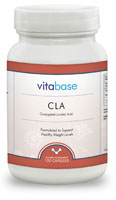| Conjugated linoleic acid (CLA) is a mixture of positional and geometric isomers of linoleic acid (cis-9, cis-12-octadecadienoic acid). Conjugated linoleic acid is a naturally occurring mixture of various isomers of linoleic acid with conjugated double bonds.
CLA is not a single substance. In contrast to linoleic acid, all the CLA isomers have conjugated bonds. Conjugated linoleic acid is a diunsaturated long chain (C18) fatty acid. CLA comprises a group of positional and geometric isomers of linoleic acid in which various configurations of cis.
Conjugated linoleic acid is formed when reactions shift the location of one or both of the double bonds of linoleic acid in such a manner that the two double bonds are no longer separated by two single bonds. The biochemical nomenclature for linoleic acid designates this fatty acid as an 18-carbon fatty acid containing two double bonds, specifies the location of the double bonds (the 9 and 12 carbon atoms), and identifies the double bonds as being in a cis-isomeric configuration. Linoleic acid is an important component of biolipids, and comprises a significant proportion of triglycerides and phospholipids. Linoleic acid is known as an "essential" fatty acid, meaning that the animal must obtain it from exogenous dietary sources since it cannot be autosynthesized. Incorporation of the CLA form of linoleic acid may result in a direct substitution of CLA into lipid positions where unconjugated linoleic would have migrated. Unlike linoleic acid, which is a single unique molecule, several dozen different CLA isomers are possible depending on which double bonds are relocated and the resultant isomeric reconfigurations.
Conjugated linoleic acid (CLA) has become the focus of numerous research programs which seek to capitalize on its nutritional, therapeutic, and pharmacologic properties. The isomers of CLA have different shapes, functions, and benefits. CLA supplements, or fats containing CLA, generally contain a mixture of these isomers. Many studies on CLA in humans include the tendency for reduced body fat, particularly abdominal fat, changes in serum total lipids and decreased whole body glucose uptake. Dietary CLA supplementation shows to be safe and does not seem to have any adverse effects. The maximum response to reduce body fat mass was achieved with a 3.4 g daily dose. CLA possesses anticarcinogenic propertie. In addition to the mammary gland, CLA has been shown to regulate lipid and energy metabolism in other tissues. Although CLA is present in many foods and can be synthesized from linoleic acid, it is made naturally in the stomach, especially in ruminant animals.
|  CLA is an omega-6 fatty acid first discovered in the early 80's that continues to be studied for its diverse applications in promoting good health. Vitabase CLA is made through a proprietary process that converts the linoleic acid derived from safflower oil to conjugated linoleic acid. Vitabase CLA is a safe, scientifically proven, effective nutritional supplement that contains no stimulants of any kind.. Click here for more information.
CLA is an omega-6 fatty acid first discovered in the early 80's that continues to be studied for its diverse applications in promoting good health. Vitabase CLA is made through a proprietary process that converts the linoleic acid derived from safflower oil to conjugated linoleic acid. Vitabase CLA is a safe, scientifically proven, effective nutritional supplement that contains no stimulants of any kind.. Click here for more information.